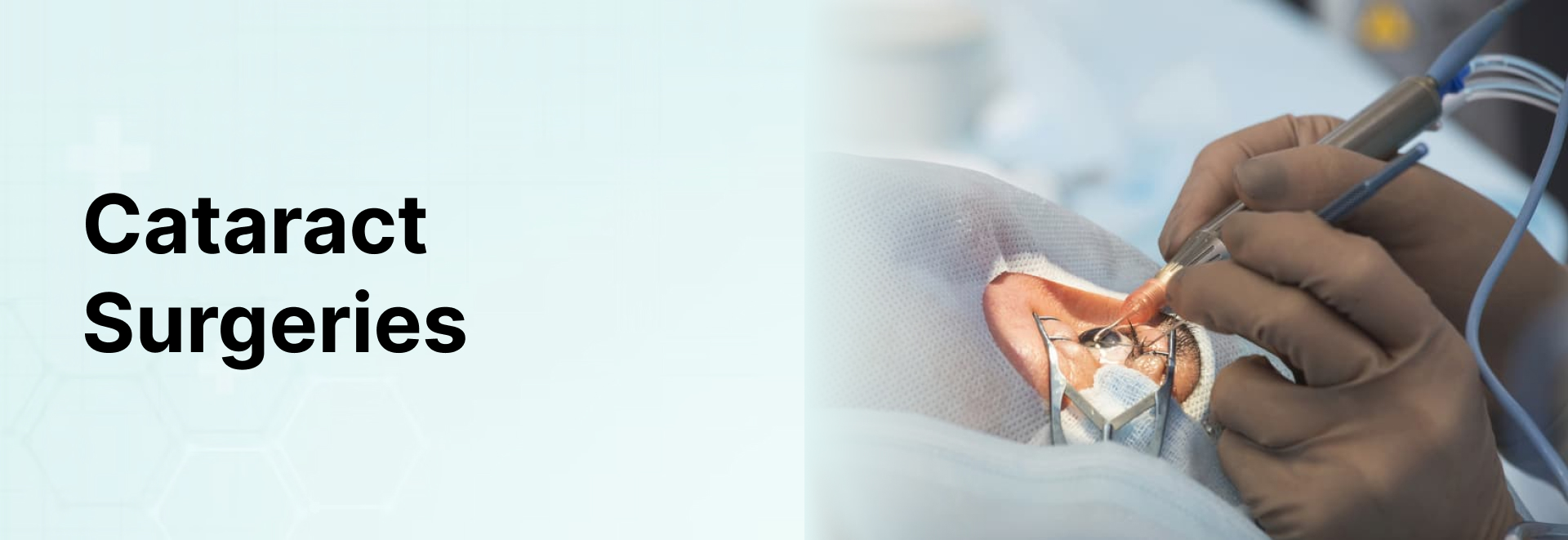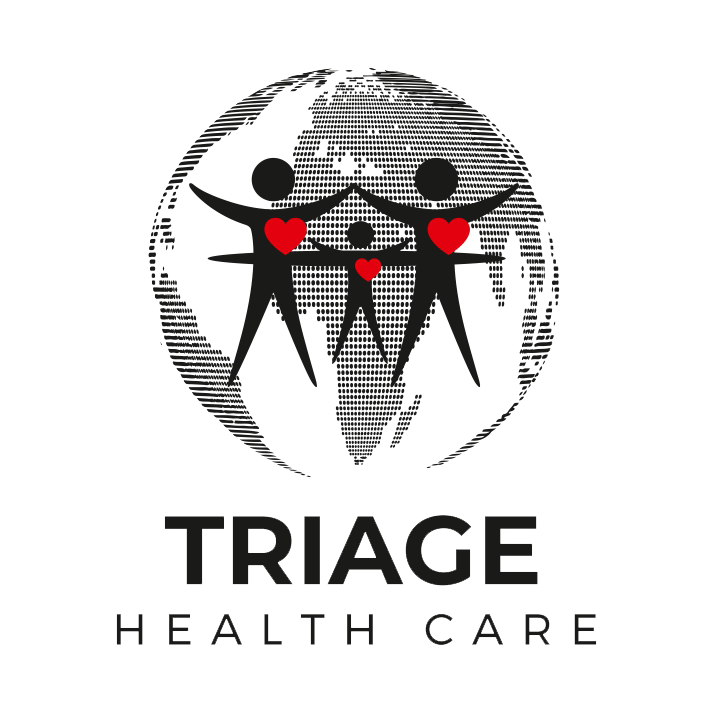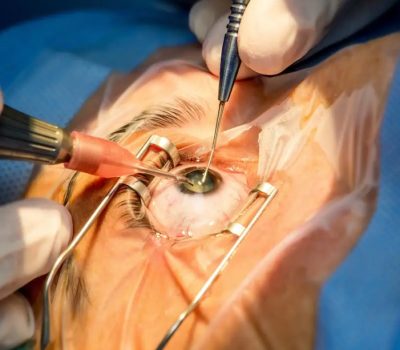
Cataract Surgery
When compared to other surgeries in medicine, cataract surgery is the one that is carried out the most frequently. The surgical process is also among the safest ones. A new artificial lens is substituted for the cataract-affected eye’s cloudy natural lens during the procedure. Surgery is performed separately on each eye if you have cataracts in both eyes.
You will be given a calming drug to help you relax and slightly sedate you for the cataract surgery so you won’t feel any pain. In order to keep you pain-free, you will also be given an exclusive numbing gel and eye drops.
What Are The Types Of Cataract Surgery?
Cataract Surgery With A Small Cut (Phacoemulsification)
The most popular procedure for removing cataracts is small-incision cataract surgery. The eye surgeon creates a tiny incision right next to the outer corner of the eye. Ultrasound waves are released by a small probe to break up the lens's hard centre. Another probe is then used to suction through the same opening and extract the remaining cataract material.
Extracapsular Surgery
Extracapsular surgery involves making a longer incision on the top of the eye to extract the lens's dense canter. Suction is then used to remove the remaining cataract material through the wide hole. At the end of the procedure, an intraocular lens (IOL), which is inserted through the prior opening, replaces the removed lens. An IOL is a maintenance-free, transparent artificial lens. It eventually fuses with the eye. An individual with an IOL typically has better vision because light can reach the retina. The improved lens is not felt or seen by the person.
Symptoms
Signs and symptoms of cataract include:
- Clouded, blurred or dim vision
- Increasing difficulty with vision at night
- Sensitivity to light and glare
- Need for brighter light for reading and other activities
- Seeing "halos" around lights
- Frequent changes in eyeglass or contact lens prescription
- Fading or yellowing of colours
- Double vision in a single eye
When a cataract first develops, it may only impact a small portion of the eye’s lens, and you might not notice any vision loss. Your lens becomes more clouded and distorted as the cataract enlarges, covering more of the lens. The signs might become more obvious as a result.
Causes
The majority of cataracts occur when the tissue that makes up the eye’s lens alters due to ageing or trauma. The lens’s proteins and strands start to degrade, clouding or obscuring vision.
Your chance of cataracts may be increased by certain inherited genetic disorders that also result in other health issues. Other visual conditions, previous eye surgery, or medical conditions like diabetes can also lead to cataracts. The long-term use of steroid medicines can also result in cataract development.
Risk Factors
Factors that increase your risk of cataracts include:
- Increasing age
- Diabetes
- Excessive exposure to sunlight
- Smoking
- Obesity
- High blood pressure
- Previous eye injury or inflammation
- Previous eye surgery
- Prolonged use of corticosteroid medications
- Drinking excessive amounts of alcohol
© Triage Healthcare All rights reserved — Made by Rittz Digital



